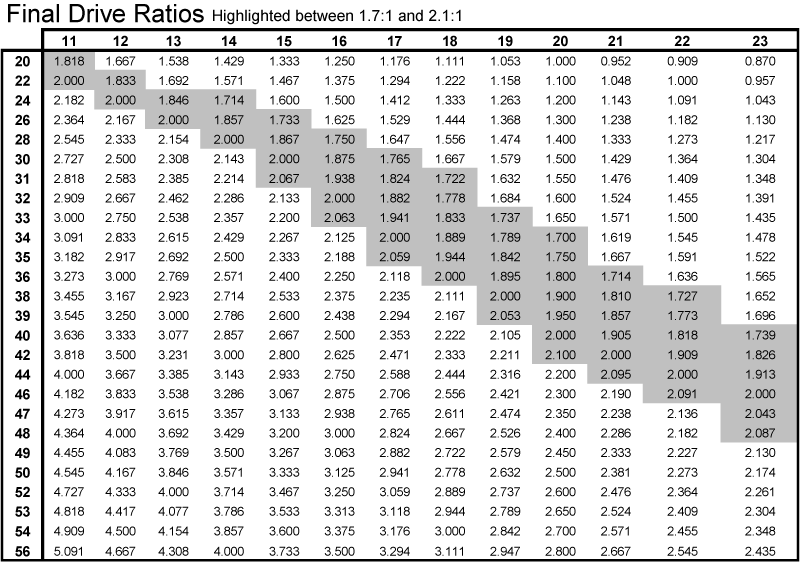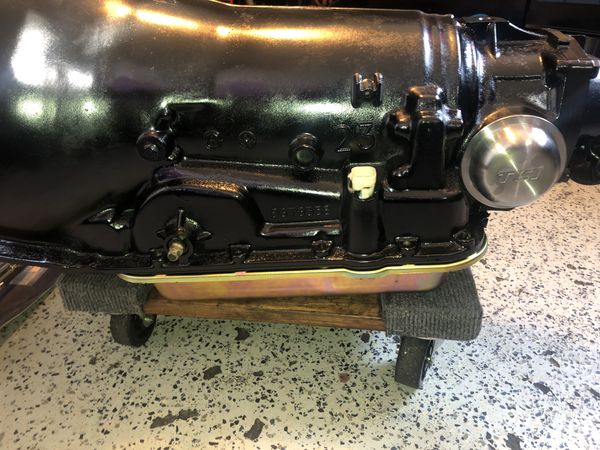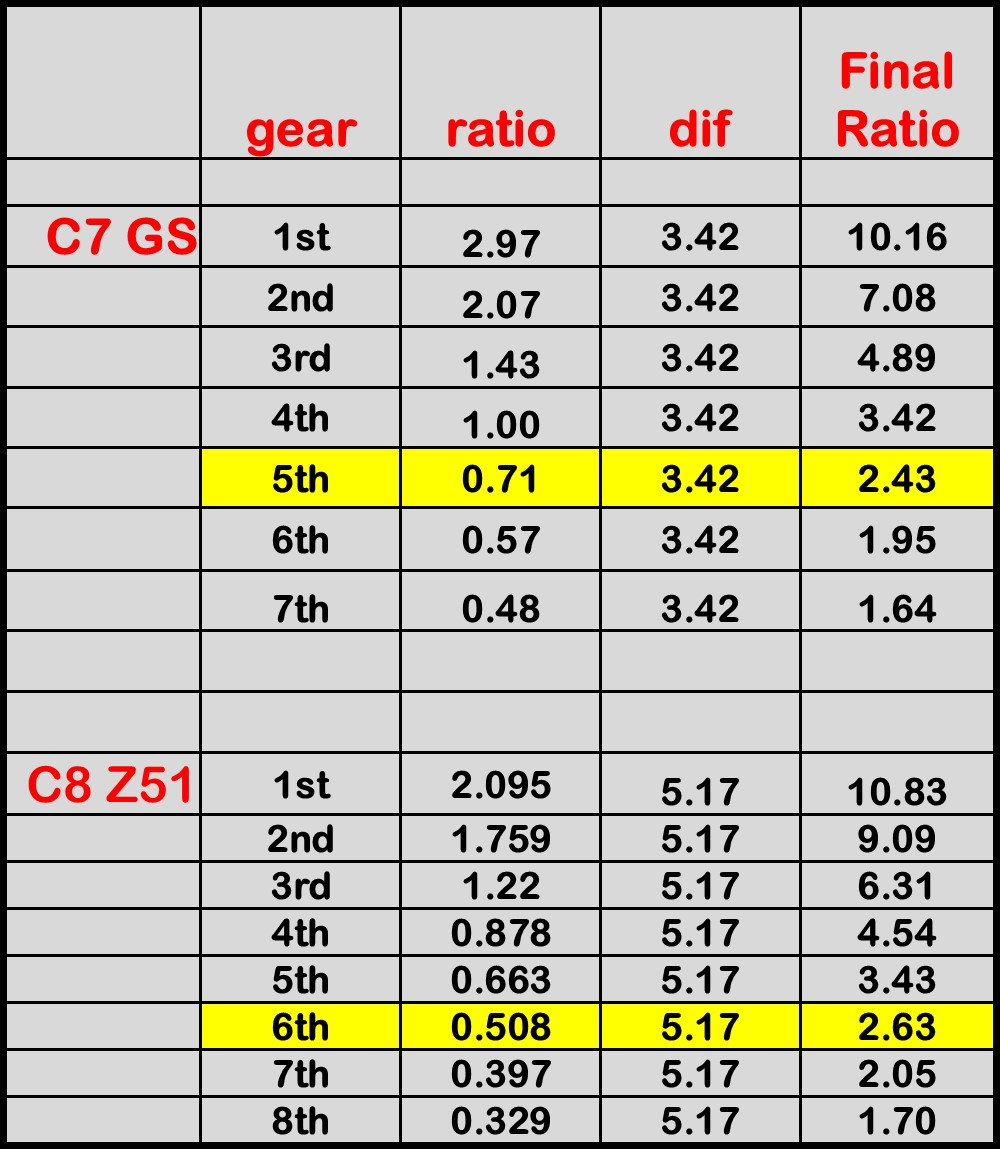

It’s important to understand that you're moving the engine into a higher RPM range. From these calculations, you can see just how much change in RPM an engine will experience with simple tire height and gear ratio changes. The RPM at approximately 60 MPH with the 4.10:1 gear worked out to 1,850 RPM while the 4.56:1 gear worked out to 2,075 RPM (both in overdrive). For the hypothetical hotrod with the traditional tall tire setup, we selected a 4.10:1 gear along with a 4.56:1 rear gear. The RPM at approximately 60 MPH worked out to 1,900 for the 3.50 (in overdrive) and 2,100 for the 3.89:1 combination in overdrive. For the “high tech”, short tire hot rod, we picked a 3.50:1 rear gear along with a 3.89:1 rear gear. The idea here is to see the approximate engine speed at 60 MPH. Let’s plug two gear ratios (for each combination) into the formulas and see what happens. That’s a good question, and one that isn’t easy to answer.

But how much gear is needed with the overdrive combination? That’s a good example where both performance and fuel economy will likely improve with a steeper gear. The 302 (with its much lower torque figure at a relatively high RPM level) using a similar gear combination won’t prove to be much fun to drive. When you factor in the fat torque curve of the hypothetical LS from our first segment, you can see that the engine just might live peacefully with the combination. When the math is done, the cruising speed works out to approximately 1,400 RPM at 60 MPH for the tall tire combination and a slightly better 1,675 RPM or so at 60 MPH for the short tire car.Īs you can easily see both combinations are just off idle with the 700R4. Swap in an overdrive and the engine speed drops to a little over idle. For example, our "big vintage tire" car engine speed works out to just 2,000 RPM at a vehicle speed of 60 miles per hour (using the 7.50X16 tire combination, the 3.08:1 ring and pinion and the Turbo 350 as a point of reference). When the numbers are crunched, things get interesting. If your car is equipped with an even taller two-series gear, then it becomes even worse. Remember, that's with a 3.08:1 rear gear. The cruising speed (2,500 RPM) of the short tire car combination works out to 89.346 MPH while the tall tire combo cruises at 106.94 (!) MPH. Given the final axle ratio of 3.08:1 in each car, the overall ratio drops to 2.156:1. What would happen if each car was fitted with an overdrive automatic? For our example, we’ll use a common 700R4. The only mechanical difference between the two is the rear tire diameter (height).

The results are interesting.Īs you can see, there’s a considerable difference in the speed of the two cars at a given RPM level. This occurs just before the fat part of the torque peak for the ZZ4 engine. For the sake of comparison, let's assume that we'll use a figure of 2,500 RPM for a cruise speed. The above figures don’t mean much until they are plugged into the next formula, which is Cruising Speed. The following formula is used when crunching the numbers: The next step is to calculate the tire revolutions per mile for each car. With this information, we compute the vehicle speeds at a specific RPM number. Here are the basics:įinal drive ratio - transmission 1.00:1 1.00:1 In this comparison, we’ll assume that cars run a ZZ4 crate motor and they both carry 3.08:1 gears out back. For the sake of comparison, let’s "test" both cars with conventional Turbo 350 transmissions (the high gear ratio is 1:1).

Let's compare a pair of hypothetical hot rods - one is a traditionally styled car with Firestone 7.50X16s on the rear and the other a high tech with P335-30ZR18 BF Goodrich G-Force T/A tires. Get a wee bit more complex and it’s easy to go too far. What all that means is less can often prove better than more. In the last issue we examined several different engine power curves and shared info on over-gearing.


 0 kommentar(er)
0 kommentar(er)
